Disclosure: Please note that some links are affiliate links, and at no additional cost to you, we earn a commission if you make a purchase.
If you would like to support this website in some way, using these links will help do exactly that.
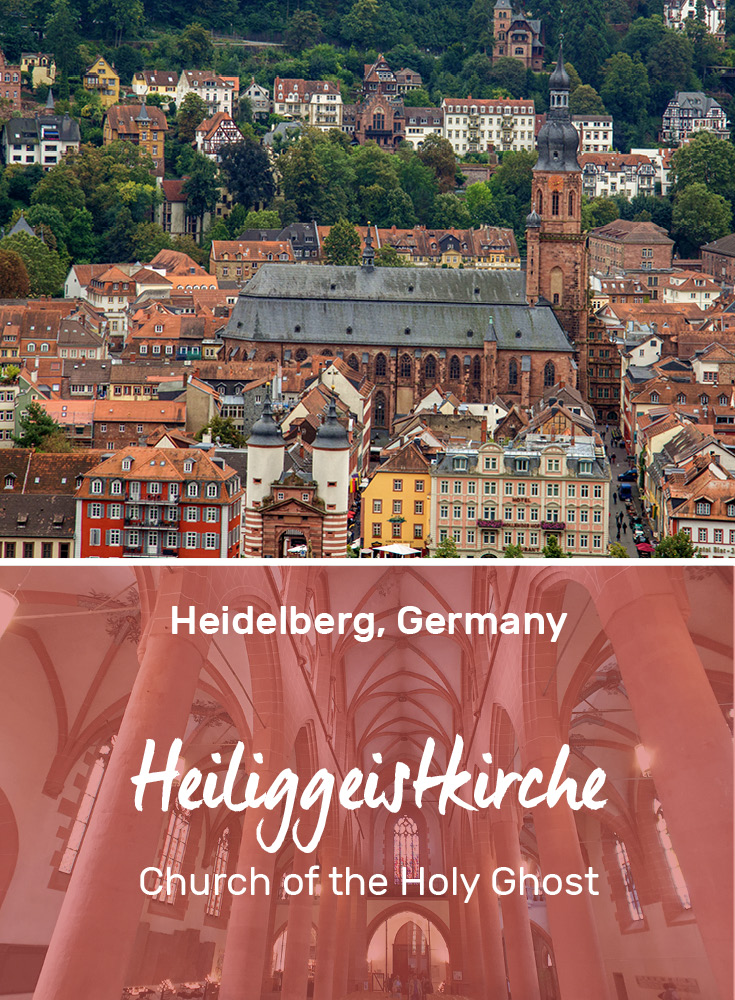
The Church of the Holy Ghost is the largest and most important church in Heidelberg. It is located on the market square in the middle of the town, where its tower dominates the cityscape. The gothic church was built from red sandstone between 1398 and 1515. Originally it was planned as a burial place for the Elector of the Palatinate and as a representative church for the region. Today, only the tomb of the builder of the church choir, Elector Ruprecht III, is still found in the church.
Protestant and/or Catholic Church?
The Church of the Holy Ghost is also known for its changing confessional history. From 1706 to 1936, more than 200 years, the church was divided into two parts by a wall. The nave was Protestant, the choir was Catholic. It was not until 1936 that an agreement was reached with the Catholic church and the removal of the wall was celebrated with a service in the church on June 24, 1936. At last the original spatial impression of the church, as the builders had designed it and wished for, was restored. A memorial plaque at the steps to the choir on the right side recalls this event and give you a pretty good glimpse of where the wall would have been.
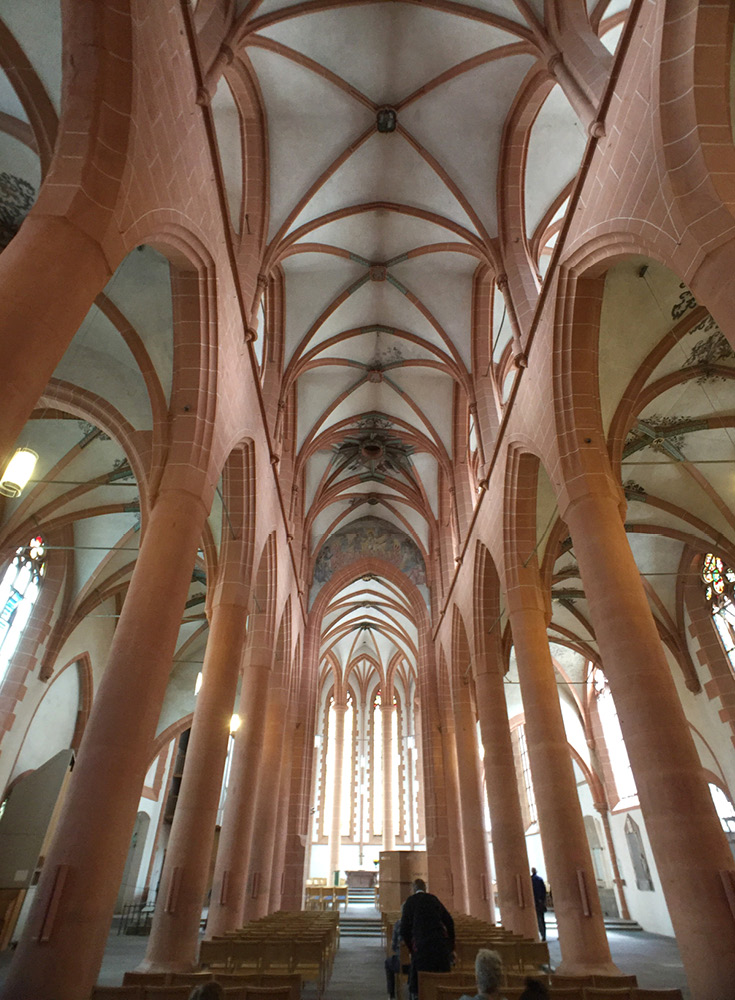
The Church of the Holy Ghost is considered a three-nave hall church and is oriented to the east. The entire church room is divided into two parts, the nave in the front, the choir in the rear. Between the nave and the choir is a triumphal arch. Look around and you will see that the church space looks rather simple, almost a bit empty. This was not always the case. Before the Reformation, the whole church was decorated with magnificent altars, sacred images, and organs. These objects were removed and destroyed during the Reformation period, which started in 1517.
Heidelberg Painter Harry MacLean
Let your view wander up to the arch of the nave and discover the picture on the ceiling called Engelskonzert, Concert of the Angels, from the 15th century. Eight angels with different musical instruments are shown. During a restoration in the 1950s, the Heidelberg painter Harry MacLean added a bassoon to an angel as a reminder of the present.
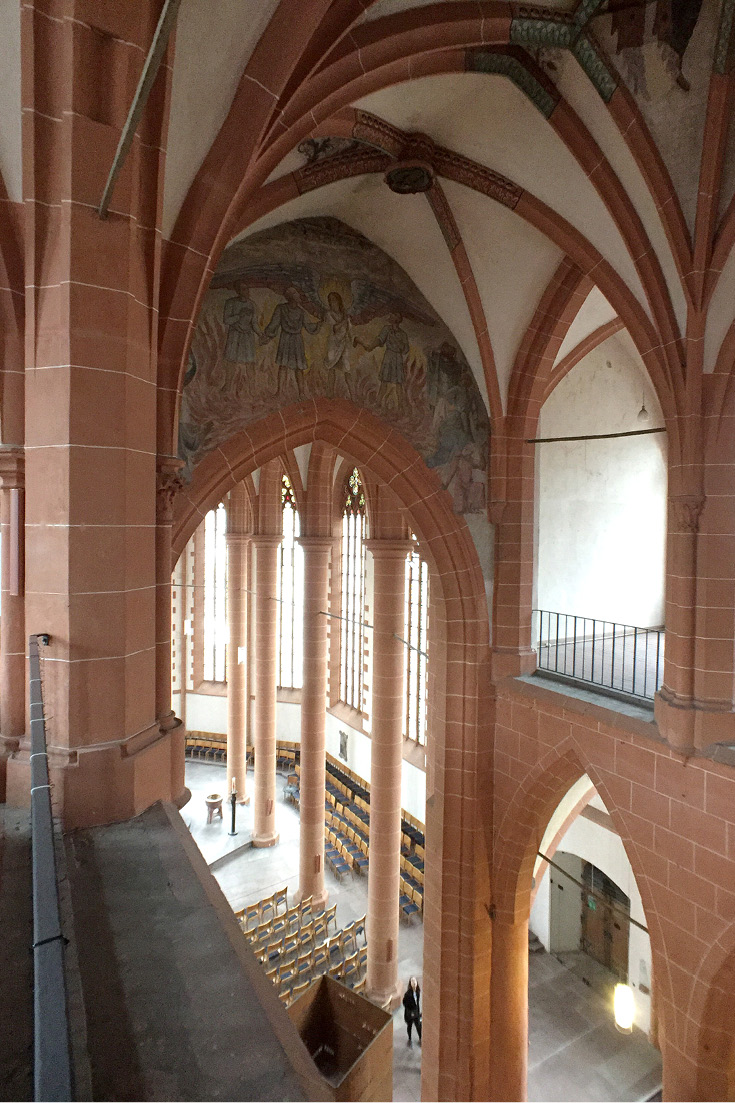
Walking towards the triumphal arch between the nave and the choir, you can spot another painting by Harry McLean from the 1950s. It is called Drei Männer im Feuerofen, Three men in the Fire Stove, and is a story from the Old Testament in the Bible. In the narrative found in Daniel’s book, chapter 3, a king throws the three men into a fire stove, but the fire does not even burn their clothes. The men are uninjured from the oven, forcing the king to believe that there is a God. Let your gaze wander along the high columns, looking towards the organ. Above the organ you will find several spiritual symbols, including a lamb, the hand of God the Father and the dove as a symbol of the Holy Spirit.
Tomb of Elector Ruprecht III
In the middle nave of the chorus, in addition to the closing stones with the Palatine Lion and the Bavarian rhombuses, the slightly larger one with the depiction of an eagle. This is one of the oldest depictions of the German Reichsadler. This final stone crowned in remembrance of the builder of the choir, Elector Ruprecht III. His tomb was originally directly underneath, at the place where the altar stands today. He died in the year of the completion of the new choir in 1410. You can find his tombstone on the northern side nave, directly adjacent to the choir. Engraved into the tombstone are the king with his wife, Elisabeth von Hohenzollern. At the king's feet is a lion, the symbol of the strength and the arms of the Kurpfalz region. At the foot of the queen you can see a dog, the sign of loyalty.
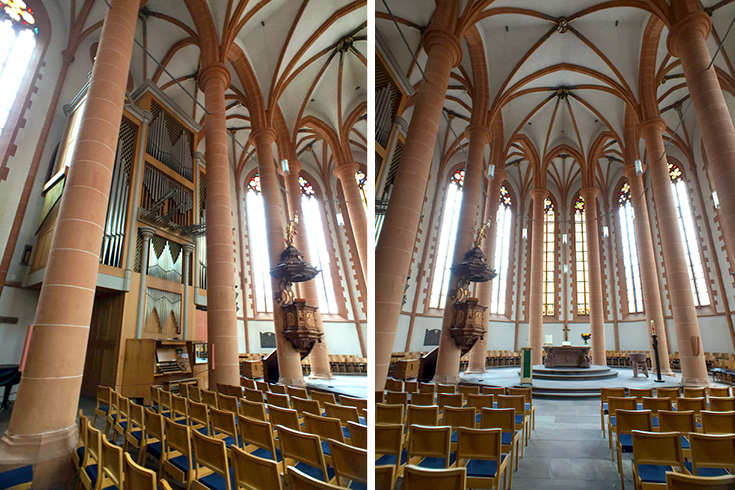
Church Organ
The organ in the church is not as old as you might think. It is called Steinmeyer/Lenter Organ and was the last organ built by the G. F. Steinmeyer & Co. company. The construction of this organ started in 1980 and completed in 1994 by Steinmeyer. It has 63 registers, about 5000 pipes and is the 13th organ to be installed in the Heiliggeistkirche. The intonation (pitch accuracy adjustment) was done by Gerhard Lenter in 1997, which led to a softer sound pattern. Music traditionally plays a special role in the Church of the Holy Ghost. The organ is played every week during the community church services as well as in festive services, and even for classical concerts. Check with the person at the entrance door for upcoming concerts if you want to hear the organ during your visit to Heidelberg.
Tower Tour
End your visit by climbing the 204 steps to the tower. From there you have a wonderful view of the castle, the river and, of course, the city itself. It is well worth the small fee of 2 Euros.
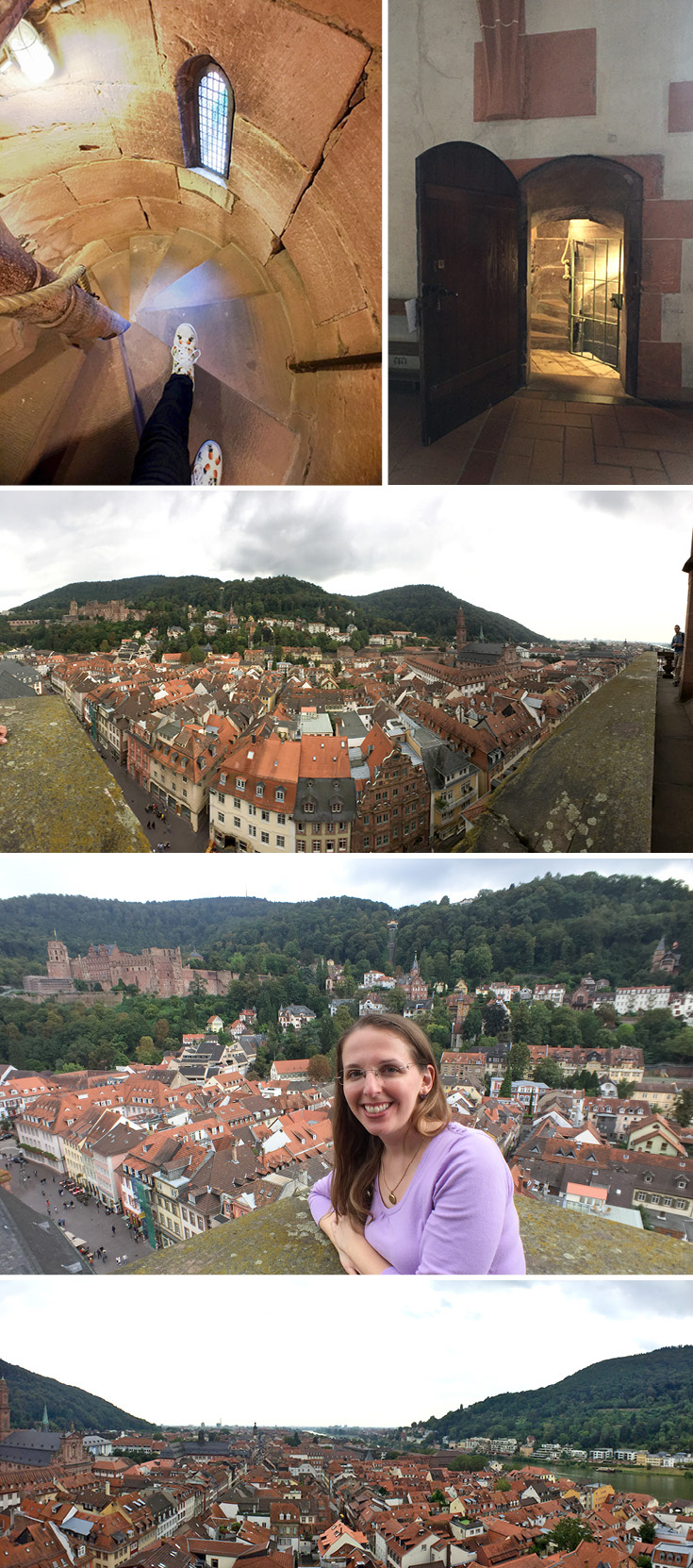
Follow Along
If you enjoyed this article, or these topics sound interesting to you, you'll love our weekly newsletter. You'll receive the newest posts each week and exclusive access to free planning resources like ‘Packing List & Tips for 2 Weeks in Germany’ and ‘Everything You Need to Rent a Car in Germany.
Thank you for reading!

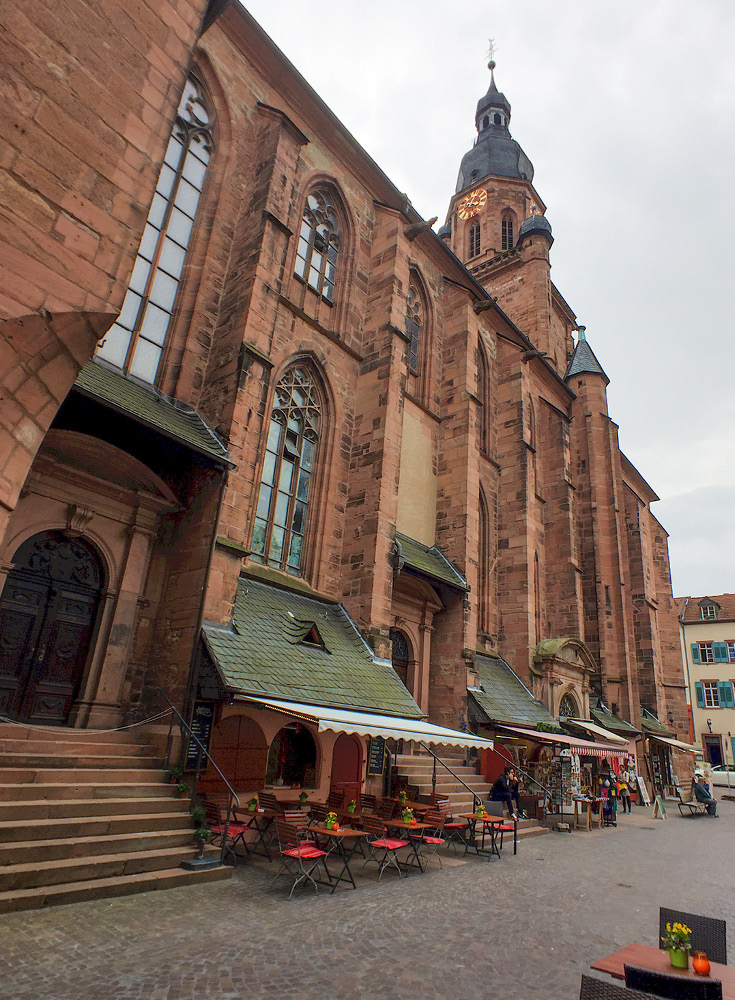
Centrally located in the middle of the pedestrian zone, the Kurpfälzisches Museum der Stadt Heidelberg, Electoral Palatinate Museum, is located inside the Palais Morass, a Baroque palace building. The history of the museum dates back to the initiative of the French emigre, Count Charles de Graimberg, who from 1810 began to devote himself to preserve the history of the Heidelberg Palace and the Palatine Princely House. His collection of coins, pictures and altars as well as sculptures (over 3,500) are the foundation of the Kurpfalz Museum.
The art collection of Charles de Graimberg was purchased from the city in 1879 and the museum was opened in 1908. After adding a new building in 1991 adjacent to the palace building, the collection grew immensely, and makes the museum experience itself a wild adventure of different styles of rooms, floors, and exhibits. It feels like the inside is so much bigger than the outside lets on. Besides collections of paintings from the 15th to the 20th century, you can also find sculptures, porcelain, Heidelberg city history, and costumes from a bygone era. Denise fell in love with Karl Weysser’s painting ‘Alte Poststation in Heidelberg mit Blick in die Seminarstrasse,’ and finding a postcard with the artwork on it in the gift shop made her very happy.
Besides art, there are also numerous archaeological finds in the museum, mainly through the remains of the Roman Neckar Bridge, which was discovered in 1877. Further archaeological excavations in Heidelberg and the surrounding palatine area after WWII, made the collection grow considerably.
History, art, porcelains, historical costumes, archaeology, period interiors, the Kurpfälzisches Museum der Stadt Heidelberg has something for everyone, and we enjoyed it very much! For more information regarding visiting hours and the history of the museum, visit their official site Kurpfälzisches Museum.
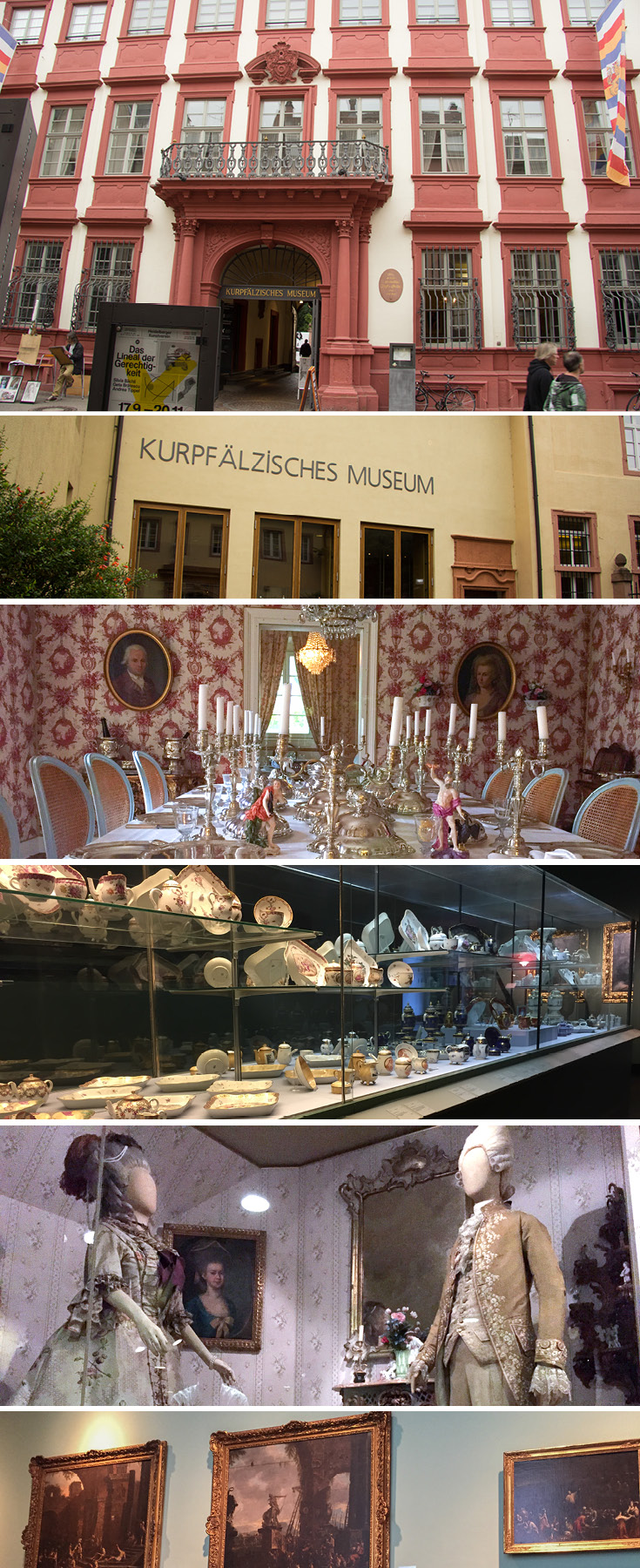
Follow Along
If you enjoyed this article, or these topics sound interesting to you, you'll love our weekly newsletter. You'll receive the newest posts each week and exclusive access to free planning resources like ‘Packing List & Tips for 2 Weeks in Germany’ and ‘Everything You Need to Rent a Car in Germany’.
Thank you for reading!

